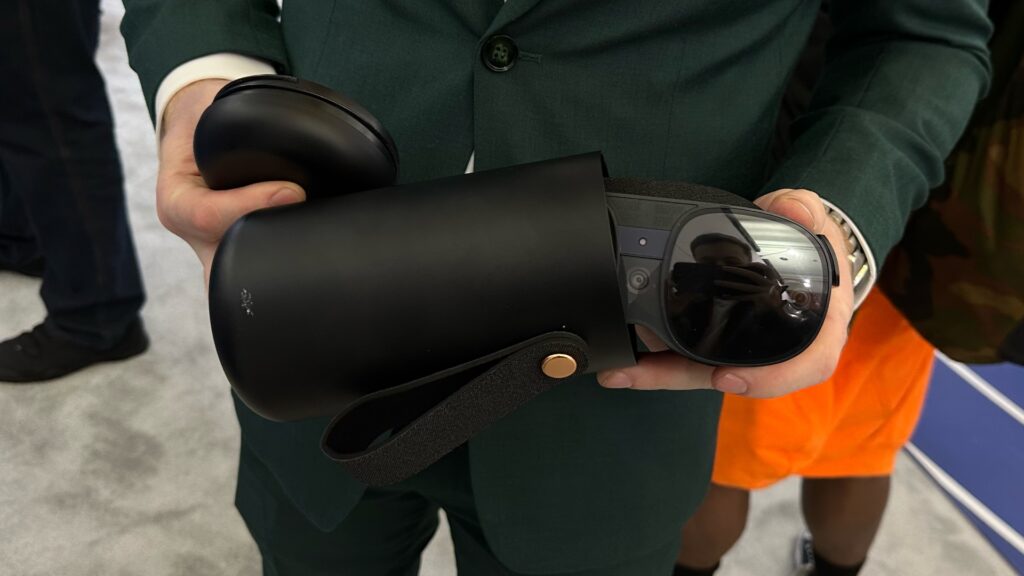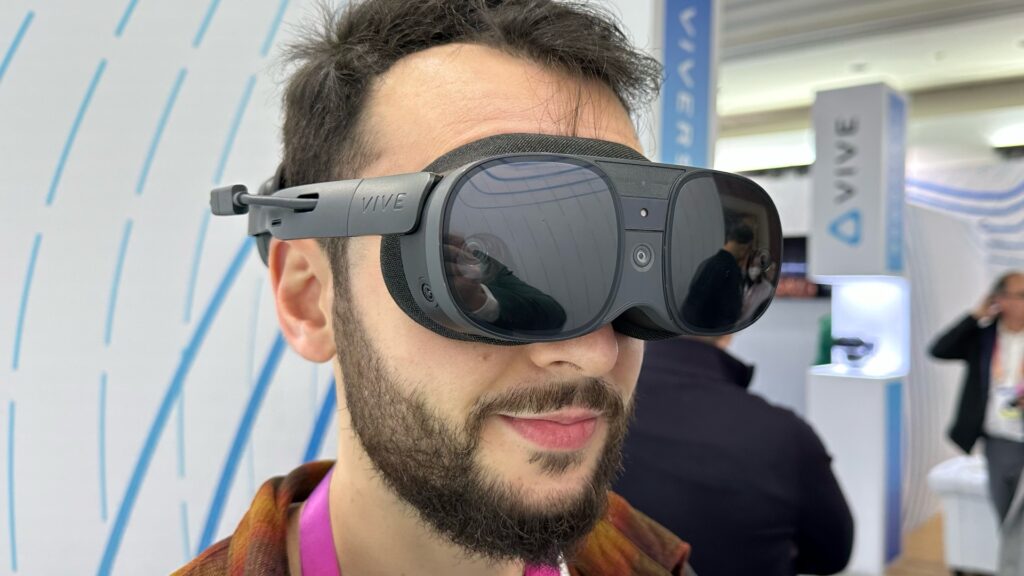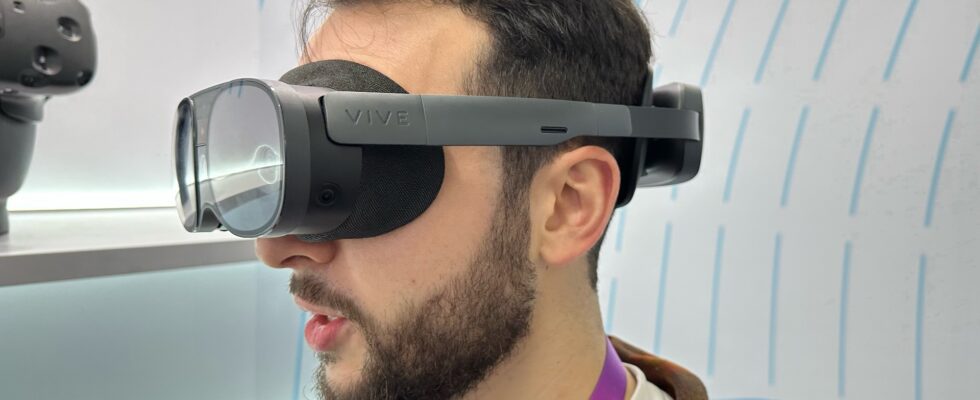HTC responds to the Meta Quest Pro with a new virtual reality headset with cameras capable of seeing in color, to allow you to see through it when you wear it. At CES in Las Vegas, Numerama had the opportunity to try it out for approximately half an hour.
Something is bothering us with the HTC Vive XR Elite, which Numerama was able to preview at CES in Las Vegas. If the performance of the headset is quite correct, particularly in mixed reality, we made the mistake of going to the trial offered by HTC without inquiring about the price of the device. Given its design and its characteristics, the Vive XR Elite seemed to us to be a VR headset positioned around 500-600 euros, a sort of high-end alternative to the Meta Quest 2. On returning to the hotel to write this handling, we realized our mistake. The Vive XR Elite costs 1,399 euros, which is 400 less than the Meta Quest Pro. This is a very high price for a portable VR headset.
Does this misunderstanding call our essay into question? Basically, no. What we think of the HTC Vive XR Elite’s quality holds true regardless of its price. However, this price difference forces us to take a step back from the attractiveness of the device. At 1,400 euros, the HTC Vive XR Elite must meet very high requirements. After 30 minutes spent with it, it is impossible to be really convinced.
A headset in tune with the Quest 2, not the Quest Pro
Aesthetically, the Vive XR Elite is very similar to the Vive Flow, HTC’s ultraportable virtual reality headset, which is controlled with a smartphone. However, the new helmet from the Taiwanese manufacturer is completely autonomous. Like the Meta helmets, it embeds its own operating system and has a multitude of applications. It comes with controllers that are very pleasant to use, but these were already available with previous HTC headsets.
According to HTC, this new standalone headset takes a leap forward in visual quality. 110 degree field of view, 4K resolution, 90 Hz refresh rate, Snapdragon XR2 chip (the same as the Quest 2)… The promise is enticing, but we have to admit to being quite disappointed. The visual quality of the Vive XR Elite is superior to that of the Vive Flow, but inferior to that of the headsets of Meta or that of the PlayStation VR2. The helmet holds the head less of course and provides feelings of nausea normally rare on high-end helmets (particularly in games where you have to climb or swim). What would have seemed acceptable to us at 500 euros is much less so at 1,400 euros. At such a price, we would have liked OLED or mini-LED, at a minimum, as well as increased comfort.
One of the arguments put forward by HTC to sell its new headphones is the possibility of connecting the headphones to a computer with a cable, to play resource-intensive games. Since the Vive XR Elite is smaller than other headsets (it fits in a box the size of a large can and weighs 625 grams), it can easily be slipped into a backpack. On this point, it is difficult to prove the Taiwanese wrong. It is still necessary that players want to invest as much money in this headset, while the Quest Pro seems much more complete (controllers, eye and expression tracking, interface, exclusive functions, etc.). By the way, expression tracking will come, but with an optional accessory.

HTC timidly launches into mixed reality
Like the Meta Quest Pro or the Lynx-R1 (a French headset!), the Vive XR Elite belongs to the category of mixed reality headsets (a category on which a certain Apple is expected). Concretely, this means that we can see the real world when we wear it, thanks to cameras capable of replicating human sight on the screens of the helmet. By pressing a button twice, you switch from the 100% virtual view to the augmented view, in which you see interface elements on top of reality.
Like Meta, HTC suffers from excessively noisy image reproduction. Mixed reality is blurry, which spoils the illusion a bit. However, the perspectives are perfectly respected. You can easily move around with a headset on your head, climb stairs or respond to a message on your smartphone without having to remove the headset. Thanks to mixed reality, VR headsets no longer isolate. However, we noted some bugs, such as objects placed behind a physical wall.
However, the uses offered by HTC are, at launch, extremely limited. Where Meta has designed its entire interface around mixed reality (with the possibility of displaying what you want, such as a web browser or an application, in the middle of its real vision), HTC is content with a few applications such as games. We were able to paint and play the guitar in mixed reality, which is quite a bit.
Gradually, HTC will extend its mixed reality, in particular by thinking of computer work with virtual screens. But for the moment, the Taiwanese does not manage to do as well as Meta.

Who is the Vive XR Elite for? It’s hard to say. At $600 or even $700, we could have recommended it to anyone considering going for Meta’s Quest 2. At 1,400 euros, it cannot be suggested to gamers who are HTC fans who want a portable VR headset. The mixed reality revolution will have to wait, hoping that future longer tests will change our minds.
